This is the first post in what will become a series of tests of the Fujifilm GFX 100, Mark II, which was released this week. You can find all the posts in this series by going to the Categories pane in the right hand panel and clicking on “GFX 100 II”.
The first thing I’m going to look at is read noise. I test read noise by making a series of photographs of the back of the body cap, and analyzing them using libraw, exiftool, and some Matlab code I’ve written. I present the results as Engineering Dynamic Range (EDR). There are two kinds of EDR that are more or less commonly used in photography. The usual one is full scale over the read noise. It’s the most common because it’s the easiest to measure, and that’s the one I’ll be presenting here. The other kind is full scale over the signal level that produces a signal to noise ratio of one. You won’t be seeing that here.
I analyzed the four raw channels independently, and I’ll show you all of them. Spoiler: they are all essentially the same. I used 14-bit precision, and both Electronic Shutter (ES) and Electronic First Curtain Shutter (EFCS). I used the ISO settings from 80 on up, in one-third stop intervals. I analyzed a 600×600 pixel crop just to the left and above the sensor vertical and horizontal centerlines.
Here’s the graph for EFCS:
And here’s the one for ES:
Except for the ISO 80 results, this is pretty standard for a modern CMOS dual conversion gain sensor. But the ISO 80 results are a lot better than one would expect.
Let’s compare the spectra of the read noise at ISO 80 and ISO 100. First, the G plane:
Well, that’s interesting! Fuji is applying a lowpass filter to that plane at ISO 80 that’s much stronger than the weak lowpass filter it’s using at ISO 100.
I call that cheating.
The R plane:
That looks about the same for both ISO settings.
The B plane:
Lowpass filtering at ISO 80, a periodic structure at ISO 100. That structure is usually associated with PDAF pixels.
And lastly, the othe G plane:
More or less the same.
That doesn’t explain all of the unusually high EDR at ISO 80, since the EDR is higher than you’d expect for all four raw channels.
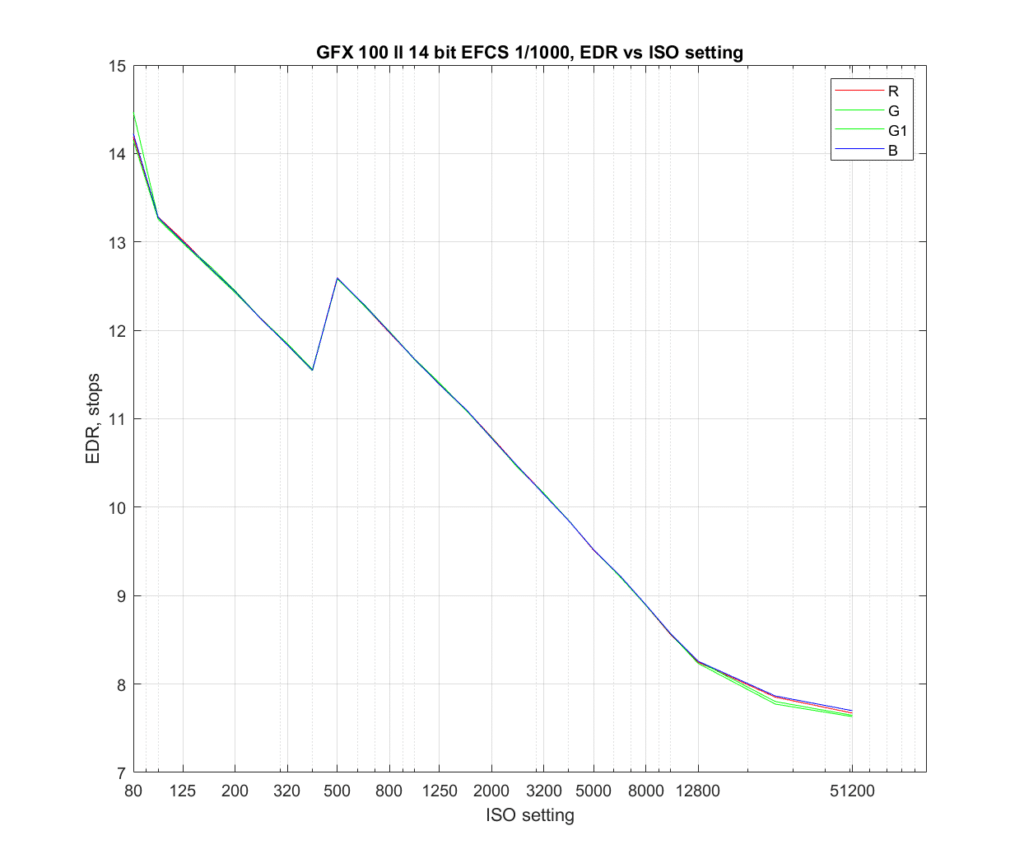
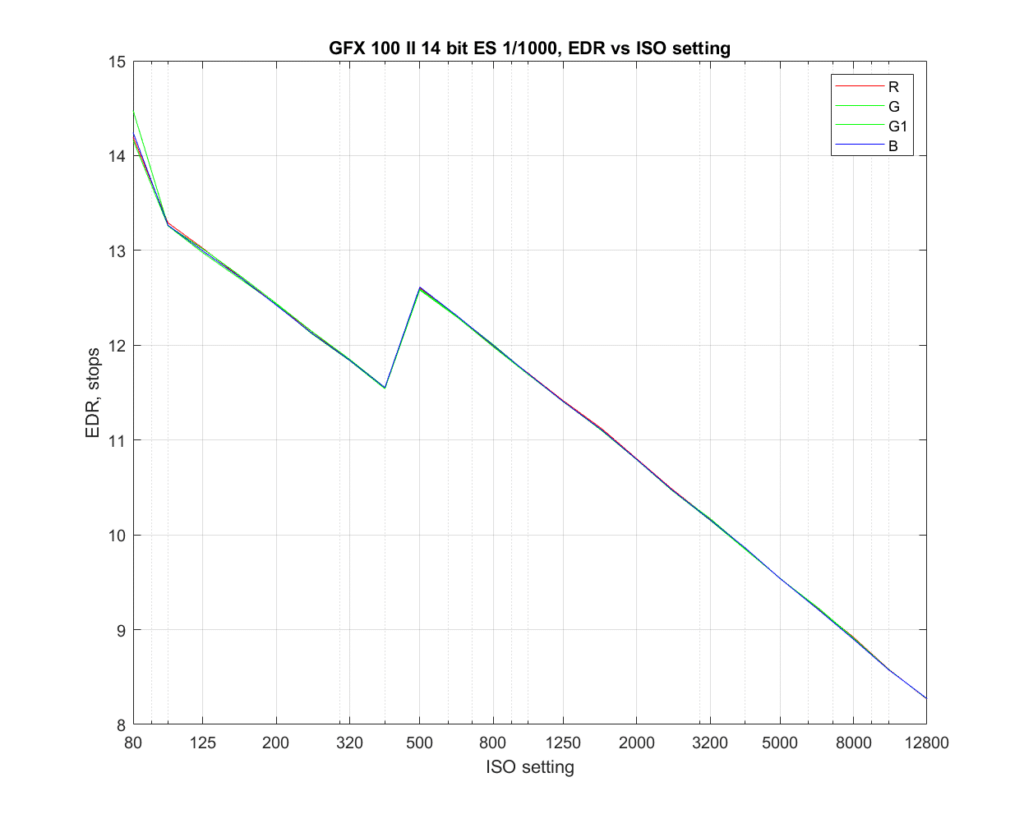
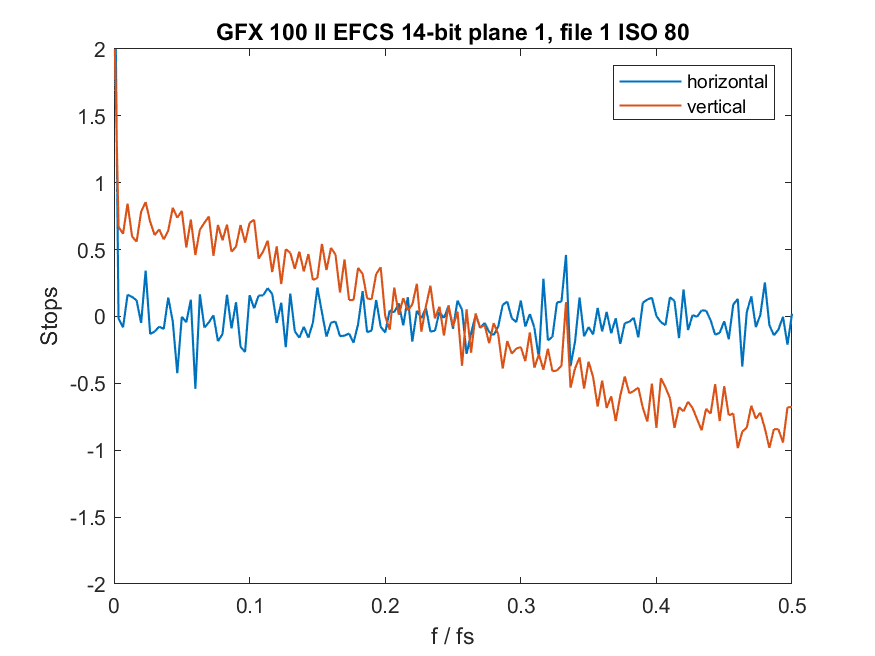
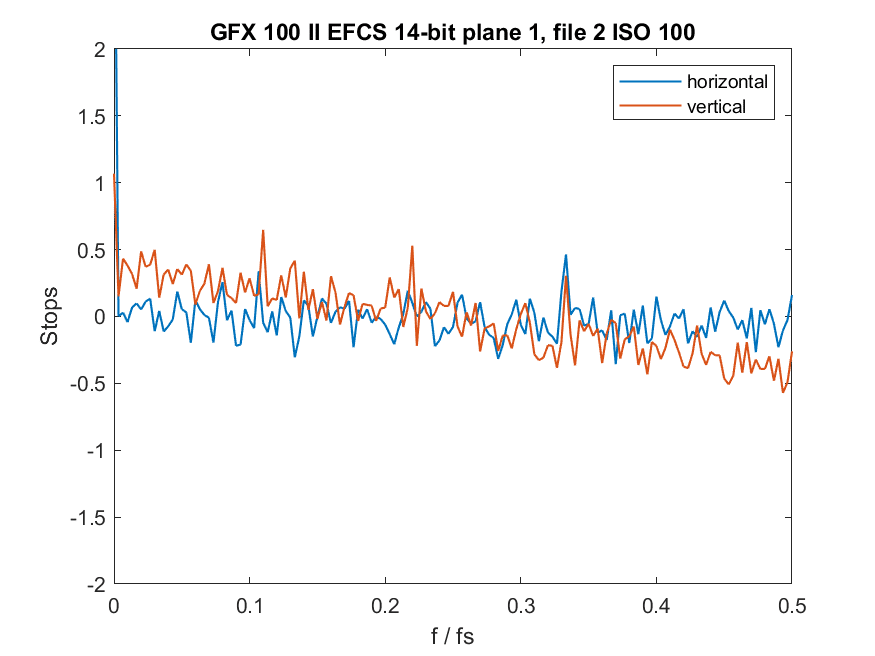
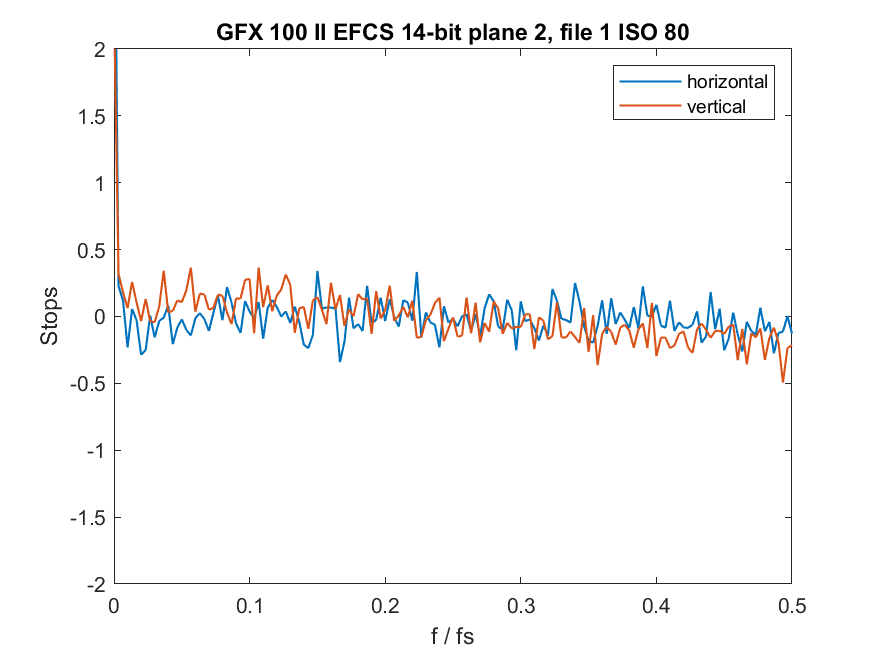
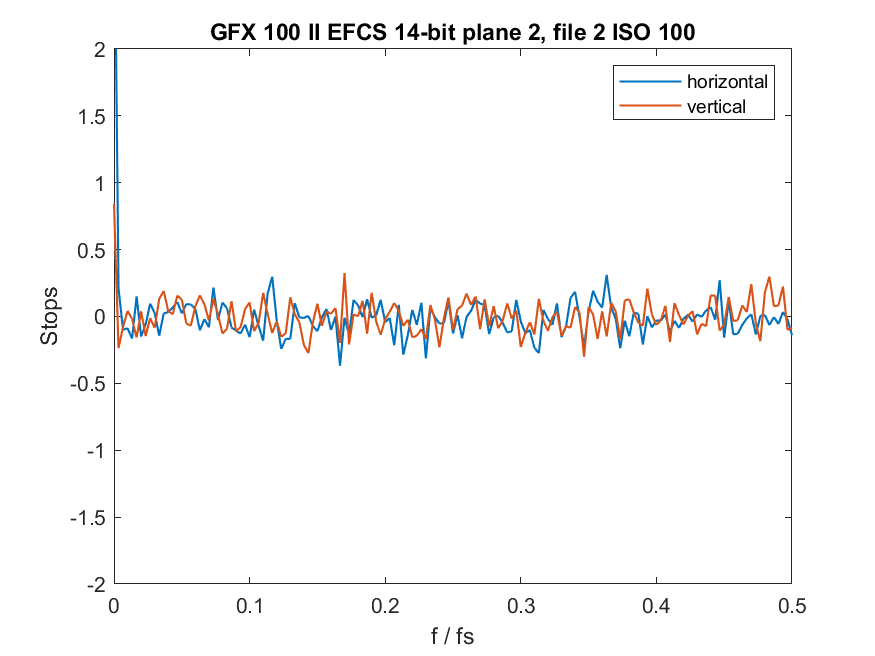
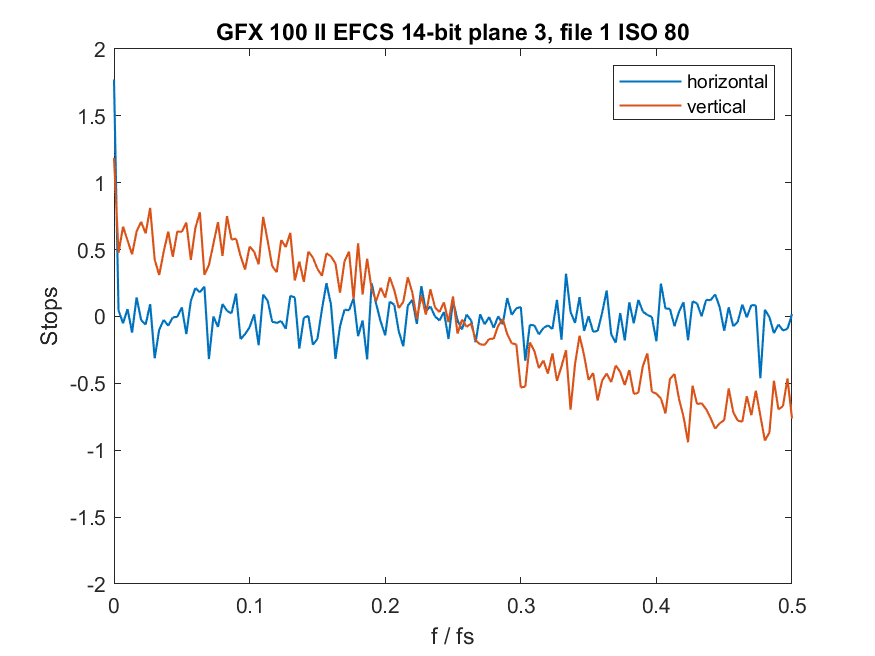
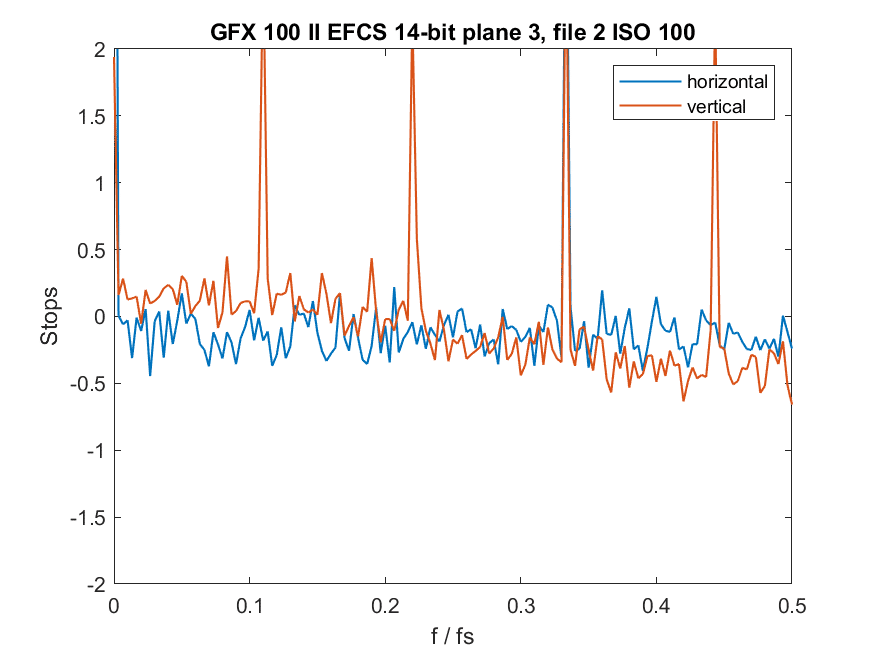
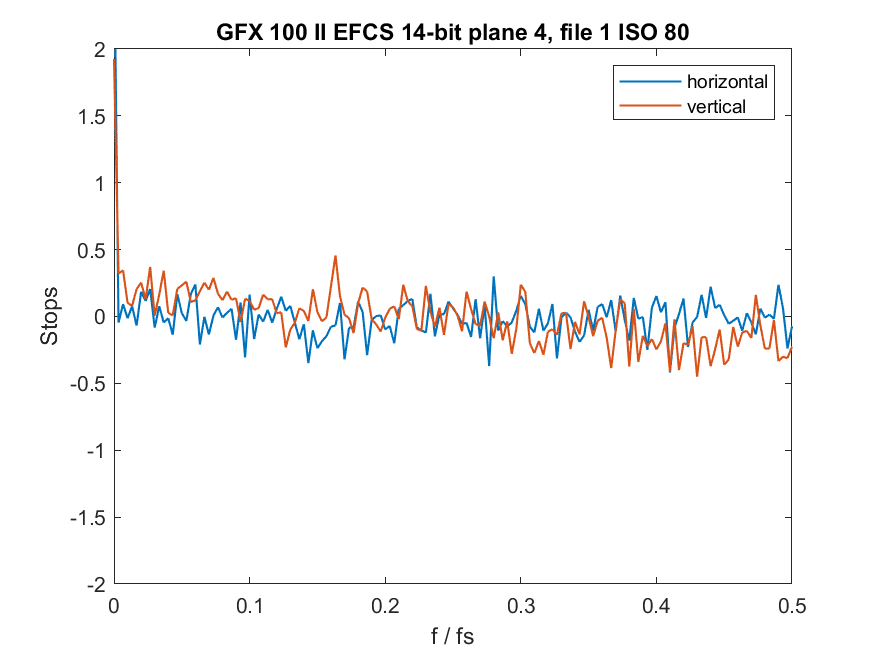
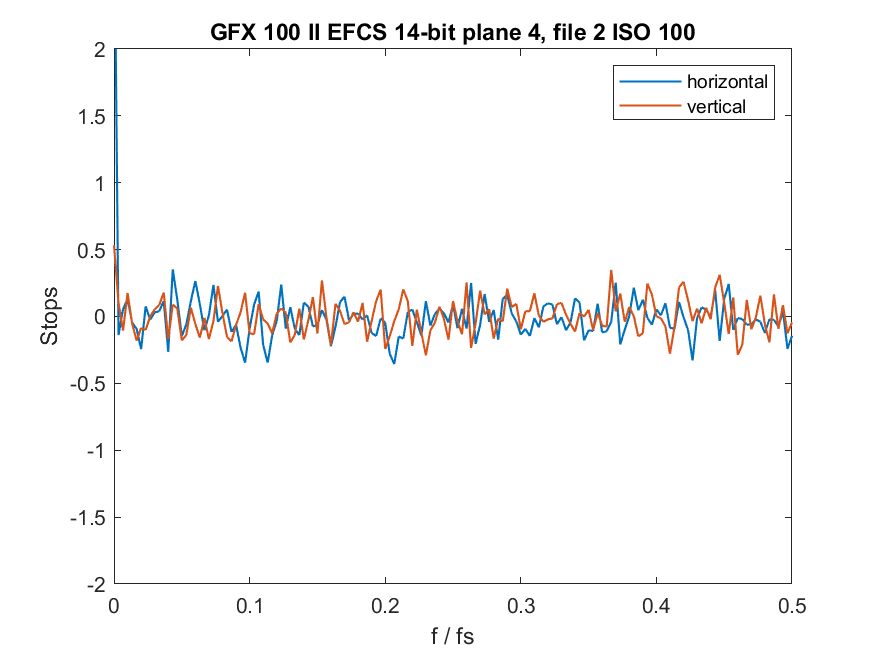
Leave a Reply